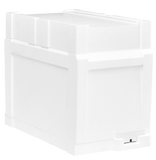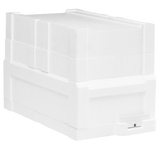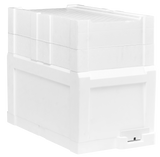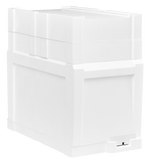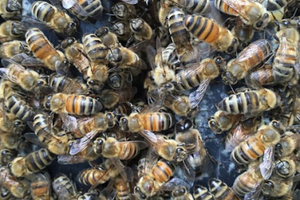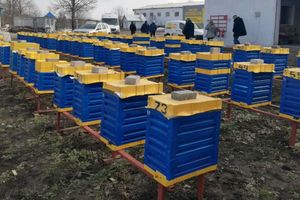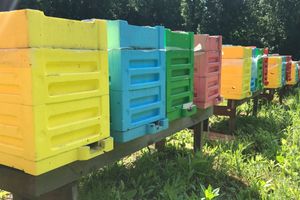
The importance of proper hive care during the summer cannot be overstated. The summer period is a critical time for bees as they collect nectar and convert it into honey, which provides their nutrition during the winter. Ensuring proper conditions in the hive during this time helps maintain the health of the bee colony, increase their productivity, and prevent overheating. Summer hive care includes choosing and preparing hives, properly positioning them in the apiary, monitoring the queen, and ensuring suitable conditions for the bees.
Choosing and Preparing Hives
Selecting the right hive for the summer period is an important task that requires consideration of several key factors. A properly chosen hive will help ensure optimal conditions for the bees and make it easier to care for them.
How to Properly Position Hives in the Summer?
-
Distance between hives: Hives should be placed at least 3-4 meters apart. This provides the bees with enough space for free flight and reduces competition for nectar.
-
Hive orientation: It is best to orient the hive entrances to the east or southeast so that the bees have access to the morning sun but are protected from midday overheating.
-
Wind protection: Hives should be located in areas protected from strong winds, which can stress the bees and cool the hive.
-
Height of installation: Placing hives on stands helps prevent water from entering in case of rain and makes maintenance easier.
Queen Monitoring in Hives
Queen monitoring is an important aspect of hive care, as the queen is crucial for the development and productivity of the bee colony. Methods of identifying and locating the queen in the hive will help beekeepers provide proper care.
How to Determine if the Queen is Present in the Hive?
-
Frame inspection: When inspecting the frames, look for fresh eggs or larvae. Their presence indicates that the queen is present.
-
Bee behavior: Bees without a queen become nervous and aggressive. If the bees are calm and focused on their work, it is a good sign.
-
Presence of queen cells: If queen cells appear in the hive, it may indicate the absence or aging of the queen.
How to Quickly Find the Queen in the Hive?
-
Use markers: Mark the queen with special paint to easily find her during inspections.
-
Methodical frame inspection: Start your inspection from the central frames, where the queen is most often found. Move systematically to avoid missing her.
-
Help from other bees: Observe the guard bees, which often surround the queen. They can help you locate her more quickly.
Hive Installation and Maintenance
Proper hive installation is critical to ensuring bee access and preventing overheating. Summer hive maintenance includes regular inspections and measures to maintain optimal conditions.
How to Properly Install Hives?
-
Location selection: Place hives in areas with good access to nectar plants but protected from direct sunlight and wind.
-
Installation height: Use stands to raise the hives off the ground. This helps avoid moisture and provides better ventilation.
-
Regular maintenance: Conduct regular inspections to check the condition of the bee colonies, detect diseases and pests, and ensure sufficient ventilation.
Proper summer hive care is key to maintaining bee health and productivity. Choosing and preparing hives, properly positioning them in the apiary, queen monitoring, and regular maintenance will help ensure optimal conditions for bee colonies. By following these recommendations, beekeepers can maximize their honey and other bee products, ensuring the stable development and health of their bees. In addition to selecting individual hives, you can take advantage of our special offers on hive kits, which include everything you need for your apiary.









